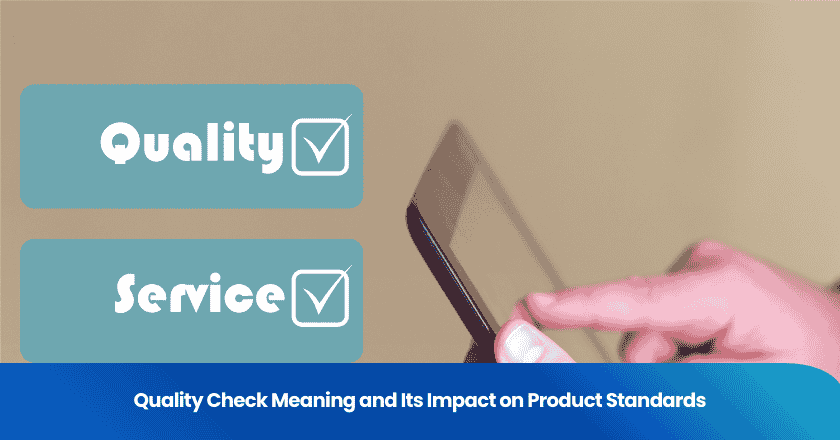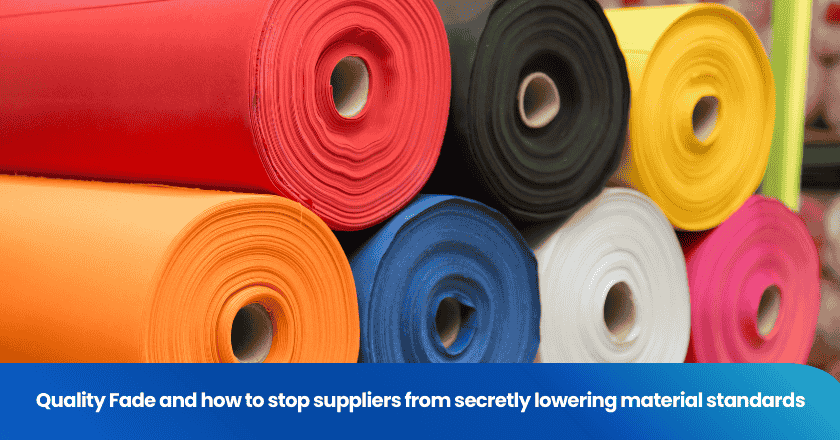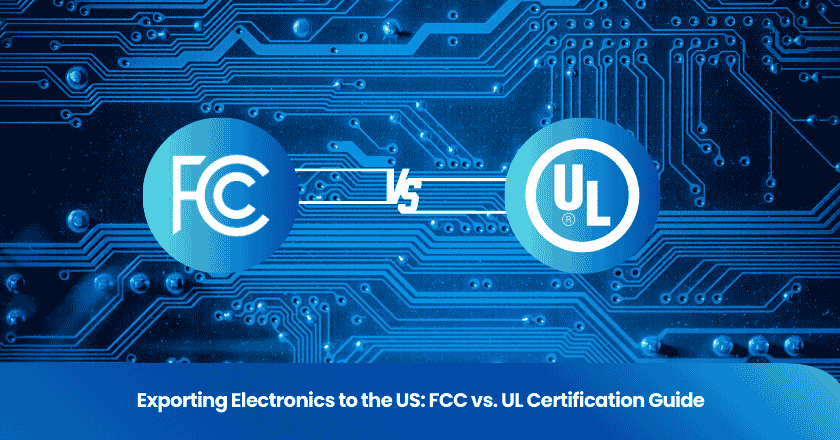
You encounter quality check meaning in every successful business. Quality control refers to the process of detecting and correcting defects in finished products. You should understand how quality control differs from quality assurance. The table below shows key distinctions:
| Feature | Quality Assurance (QA) | Quality Control (QC) |
|---|---|---|
| Primary Focus | Process-oriented: Prevent defects | Product-oriented: Detect and correct defects |
| Purpose | Ensure processes are effective and efficient | Verify finished product meets standards |
| Timing | Proactive: Before production | Reactive: After production |
| Goal | Build quality into the process | Catch defects before customer delivery |
You improve product standards and business outcomes by grasping these differences.
Key Takeaways
- Quality checks ensure products meet established standards, preventing defects before reaching customers.
- Understanding the difference between quality assurance and quality control helps improve product quality and business outcomes.
- Implementing early defect detection saves costs and protects your brand reputation by minimizing recalls.
- Regular quality checks enhance customer satisfaction, leading to trust and repeat purchases.
- Adhering to quality standards ensures compliance with regulations, reducing legal risks and enhancing safety.
Quality Check Meaning
Definition
You encounter the term quality check meaning in many industries, but its core definition remains consistent. A quality check refers to the systematic process of examining products, services, or procedures to ensure they meet established standards. You use quality checks to identify and correct defects before products reach customers. This process plays a vital role in maintaining reliability and safety across sectors.
Quality check meaning varies depending on the business context:
- In the food industry, you rely on quality checks to guarantee safety and hygiene, protecting consumers from health risks.
- In manufacturing, you perform inspections and tests on production lines to meet specific standards.
- In software development, you conduct code reviews and testing to ensure functionality and performance.
- In construction, you monitor materials and processes to adhere to safety and design specifications.
- In healthcare, you maintain the accuracy of medical tests and treatments through rigorous quality checks.
You often see confusion between quality assurance and quality control. Quality assurance and quality control share the goal of improving product quality, but they differ in approach and scope. Quality assurance focuses on preventing defects by improving processes, while quality control detects and corrects errors after they occur. The table below highlights these differences:
| Aspect | Quality Assurance (QA) | Quality Control (QC) |
|---|---|---|
| Approach | Proactive process improvement | Reactive error detection |
| Scope | Broad, covers all quality processes | Focused, targets specific stages |
| Activities | SOPs, process design, training, audits | Issue detection, analysis, corrective actions |
| Outcome | Consistency, reduced errors | Minimized defects, cause examination |
You need to understand quality assurance and quality control to implement effective quality management systems. Quality assurance and quality control work together to uphold product standards and reduce risks.
Purpose
You use quality checks to achieve several important objectives. The primary purpose centers on ensuring that products meet specified requirements and remain consistent and reliable. You develop systematic approaches that maintain operational efficiency and high product quality. Quality check meaning extends beyond simple inspection; it involves a commitment to continuous improvement and defect prevention.
You minimize defects, ensure safety, and maintain functionality through rigorous quality checks. You identify risks throughout the product lifecycle, which allows you to address issues early and prevent defective products from reaching consumers. Companies that prioritize preventive measures lower defect rates, build consumer trust, and mitigate legal risks.
You see quality assurance and quality control applied in methodologies such as Lean Management and Six Sigma. Lean Management emphasizes defect prevention through root cause analysis and ongoing improvement. Six Sigma uses statistical tools to define goals, measure defects, analyze causes, and implement solutions. These approaches have led to significant reductions in defects and substantial cost savings.
You rely on quality assurance and quality control to safeguard customer satisfaction and protect your reputation. Quality check meaning encompasses not only the detection of defects but also the creation of reliable systems that support long-term business success.
Importance
Product Standards
You rely on quality checks to uphold product standards in every industry. These checks ensure that each item meets the specifications set by your organization and regulatory bodies. When you implement strong quality assurance practices, you create a foundation for consistent product quality. You use quality management systems to monitor and document every step, which helps you maintain high standards and minimize variability.
Early defect detection plays a crucial role in protecting your reputation and reducing costs. The following table illustrates the financial impact of catching defects early versus late in the production process:
| Detection Stage | Estimated Cost of Recall | Potential Cost Savings |
|---|---|---|
| Late Detection | $10 million | N/A |
| Early Detection | $333,000 | 30x less |
You see that early detection not only saves money but also prevents supply chain disruptions and manufacturing delays. You avoid direct costs such as retrieval and disposal, and you protect your market share by maintaining reliable product standards.
Customer Satisfaction
You build customer satisfaction by delivering products that meet or exceed expectations. Quality assurance helps you design processes that consistently produce safe and reliable goods. When you display quality seals on your products, you send a message of trust and confidence to your customers. These seals assure consumers that your products have passed rigorous checks and meet industry standards.
- You foster trust and confidence by providing guarantees from recognized authorities.
- You enhance perceived value, allowing you to position your products as premium offerings.
- You encourage brand loyalty, which leads to repeat purchases and long-term relationships.
- You address safety and sustainability concerns, meeting the demands of modern consumers.
You prevent recalls and negative publicity by identifying defects early. You protect your reputation and maintain high customer satisfaction ratings. You understand that satisfied customers are more likely to recommend your products and return for future purchases.
Compliance
You operate in industries where regulatory compliance is non-negotiable. Quality assurance embeds strong practices into your daily operations, helping you mitigate risks and enhance product quality. You maintain meticulous documentation and conduct regular internal audits to ensure adherence to standards. You adopt a risk-based approach to quality management, which allows you to proactively manage risks and safeguard against non-compliance.
- You create robust systems that meet regulatory requirements.
- You reduce the likelihood of legal issues and penalties.
- You demonstrate your commitment to safety and ethical standards.
You recognize that compliance is not just about meeting minimum requirements. You use quality assurance to drive continuous improvement and maintain your license to operate in highly regulated markets.
Tip: You strengthen your business by prioritizing early defect detection, customer satisfaction, and regulatory compliance. These efforts protect your reputation and support long-term success.
Methods
Manual Checks
You rely on manual checks to maintain high standards in industries such as automotive, pharmaceuticals, and food production. In the automotive sector, inspectors perform several key tasks:
1. Visual inspection helps you spot defects like scratches, dents, or misalignments on vehicle surfaces.
2. Dimensional inspection ensures that parts meet precise measurements using tools such as calipers.
3. End-of-line testing confirms that all systems function correctly after assembly.
4. Traceability systems allow you to track components and address issues with defective parts.
5. Quality audits and inspections provide regular reviews throughout production to ensure compliance.
Inspectors play a vital role in monitoring raw materials before production begins. You check physical characteristics, such as dimensions, weight, and color, and look for damage from transportation. You verify proper labeling and packaging, ensuring that all materials meet specifications and documentation requirements.
Tip: Regular manual checks help you catch defects early and maintain consistency in your quality management system.
Automated Checks
You use automated checks to improve accuracy and efficiency, especially in electronics manufacturing. Automated optical inspection systems examine printed circuit boards for defects in solder quality and component placement. In semiconductor production, these systems detect microcracks and contamination that you cannot see with the naked eye. The precision of automated inspection ensures that even microscopic flaws are identified, which helps you prevent product failures and maintain high standards.
Automated checks support your quality assurance efforts by providing objective results and reducing human error. You benefit from faster throughput and consistent inspection outcomes, which are essential for industries with strict quality control process requirements.
Inspection Techniques
You apply a range of inspection techniques to meet industry-specific standards. In pharmaceutical production, best practices include both manual and automated visual inspection. The table below summarizes common methods:
| Inspection Method | Description | Key Considerations |
|---|---|---|
| Manual Visual Inspection (MVI) | Human inspectors evaluate containers | Detection rates vary; endorsed by pharmacopoeias |
| Automated Visual Inspection (AVI) | Advanced imaging technologies for inspection | Enhances throughput; must meet regulatory standards |
| Critical Process Parameters | Lighting, backgrounds, inspection duration | Proper settings are crucial for quality |
| Human Factors | Training and environment impact outcomes | Ongoing training and distraction-free environment |
| Regulatory Controls | Documentation and stringent requirements | Compliance with guidelines is mandatory |
You ensure proper lighting, use alternating backgrounds, and calibrate equipment regularly. You set inspection duration for each unit and provide breaks for inspectors to maintain focus. These techniques help you uphold quality assurance and meet regulatory controls.
Note: Effective inspection methods support your commitment to product safety and regulatory compliance.
Process
Steps
You follow a structured process to ensure products meet the highest standards. In the food industry, you start by establishing clear quality metrics and standards for every product attribute. You create detailed standard operating procedures that guide each step of production. You inspect raw materials and manage suppliers to guarantee ingredient quality. You conduct food safety testing and monitor results to verify compliance with safety requirements. You implement traceability systems that allow you to track products and manage recalls efficiently. You perform internal and external audits to assess the effectiveness of your quality assurance and quality management systems. You adhere to regulatory compliance by meeting all legal and consumer requirements. You train employees and encourage continuous improvement to maintain excellence.
Typical steps in a quality check process:
1. Define quality metrics and standards.
2. Develop and follow standard operating procedures.
3. Inspect raw materials and manage suppliers.
4. Test and monitor for food safety.
5. Track products with traceability systems.
6. Conduct audits to evaluate processes.
7. Ensure regulatory compliance.
8. Train staff and promote ongoing improvement.
Tip: You strengthen your quality assurance efforts by following these steps and adapting them to your industry.
Ensuring Standards
You maintain consistent standards by using proven strategies throughout your quality management process. You implement corrective measures to address defects and improve processes. You train employees to uphold standards and conduct regular tests. You analyze data and gather feedback to identify and fix errors. You test processes with different staff members to confirm effectiveness. You document every test and corrective action to enhance accountability.
| Strategy | Description |
|---|---|
| Implement corrective measures | Address and prevent quality issues by correcting defects and improving processes to reduce future errors. |
| Employee training | Equip employees with the necessary knowledge to maintain quality standards and conduct regular tests. |
| Data analysis and feedback | Regularly analyze quality control test performance and gather feedback to identify and rectify errors. |
| Testing process | Test the defined process with different staff members to ensure it works effectively in practice. |
| Identify and correct problems | Use quality control tests to find and rectify issues in manufacturing or service processes. |
| Documentation | Maintain detailed records of tests and corrective actions to enhance accountability and learning. |
You also benefit from technological advancements. AI and automation help you reduce human error and provide real-time insights. Predictive analysis allows you to foresee potential failures and take preventative measures. You transform your quality assurance approach from reactive to proactive, optimizing processes and improving reliability.
Impact
Benefits
You gain measurable advantages when you implement structured quality checks. Companies report faster revision cycles, early error detection, and improved management of production stages. You prevent costly recalls and reduce financial risks by catching defects before products reach the market. Waste reduction becomes possible as you minimize lost time and materials, supporting both environmental and financial goals. Accelerated approval processes help you deliver products to customers more quickly.
| Benefit Description | Impact on Companies |
|---|---|
| Reduction in revision time | Faster product delivery |
| Early error detection | Less time spent on downstream inspections |
| Improved revision cycle management | Fewer production delays |
| Business growth from efficiency | Ability to take on more projects |
| Prevention of costly recalls | Protection of brand image and finances |
| Waste reduction and sustainability | Enhanced environmental and financial outcomes |
| Accelerated approval process | Shorter time-to-market |
You see improvements in key metrics after adopting quality assurance practices. Defect rates drop by 50-70%, warranty claims decrease by 30-40%, and first-time quality rises by 25-35%. These results show that quality checks drive operational efficiency and minimize risks.
Cost Reduction
You lower expenses by using systematic quality checks in manufacturing. First-article inspections and functional testing help you minimize defect rates. You spend less on rework and product returns, which boosts your bottom line. Efficient error detection prevents delays and reduces the need for additional inspections. You save time and resources, allowing you to focus on growth and innovation.
Tip: Early detection of errors leads to significant cost savings and supports sustainable business practices.
Trust
You build trust with customers by delivering reliable products. High-quality data and consistent results encourage users to provide accurate feedback. When you maintain strong quality assurance systems, you create a foundation for lasting relationships. Customers feel confident in your products and are more likely to return. Trust also enhances your reputation and helps you stand out in competitive markets.
- High-quality data supports effective systems and earns user trust.
- Customers who trust your products provide better feedback, improving future offerings.
- Treating data quality as a relationship outcome strengthens trust-building mechanisms.
You measure success using metrics such as defect density, defect removal efficiency, test coverage, and customer-reported defects. These indicators help you track progress and maintain high standards.
You strengthen your business by prioritizing quality assurance. Quality checks help you maintain high product standards and deliver reliable products to consumers. You benefit from improved customer satisfaction, cost control, and compliance with regulations.
- Customer satisfaction increases as you reduce complaints and returns.
- Cost control improves when you minimize defects and waste.
- Compliance standards protect you from fines and penalties.
| Benefit | Description |
|---|---|
| Prevents Defects | You identify and eliminate defects before products reach consumers. |
| Enhances Customer Trust | Reliable products foster trust and encourage repeat purchases. |
| Ensures Compliance | Adhering to safety standards protects consumers and boosts your reputation. |
You create long-term stability and growth by implementing robust quality management systems. You can evaluate and enhance your quality check processes by engaging employees, using evidence-based decisions, and conducting regular audits. Continuous improvement keeps your business competitive and supports lasting success.
FAQ
What is the main goal of a quality check?
You use quality checks to confirm that products meet specific standards. This process helps you identify defects and maintain consistency in production.
How often should you perform quality checks?
You should conduct quality checks at every critical stage of production. Regular inspections help you catch issues early and maintain high product standards.
Who is responsible for carrying out quality checks?
You assign trained inspectors or quality assurance staff to perform quality checks. These professionals follow established procedures to ensure accuracy and reliability.
What happens if a product fails a quality check?
You remove products that fail quality checks from the production line. You investigate the cause, correct the issue, and prevent similar problems in future batches.
How do quality checks differ from quality control?
Quality checks focus on inspecting products for defects. Quality control involves a broader system that manages and improves the entire production process.
Grow your business with TradeAider Service
Click the button below to directly enter the TradeAider Service System. The simple steps from booking and payment to receiving reports are easy to operate.



